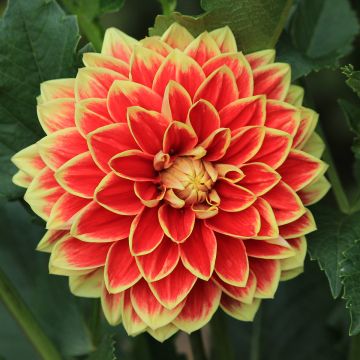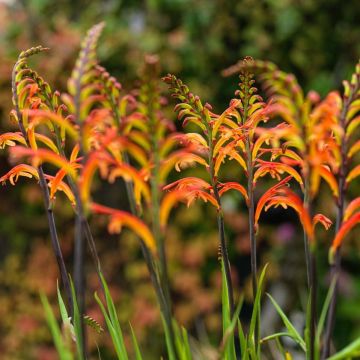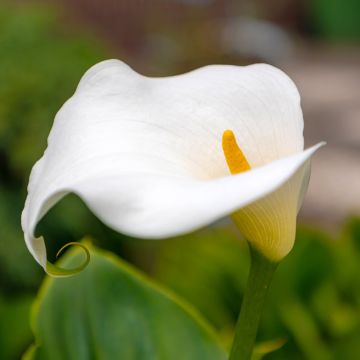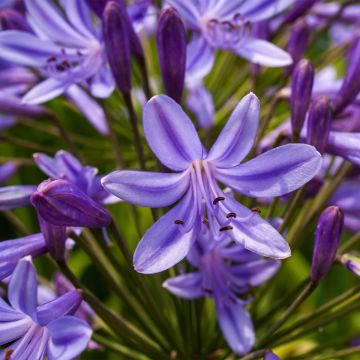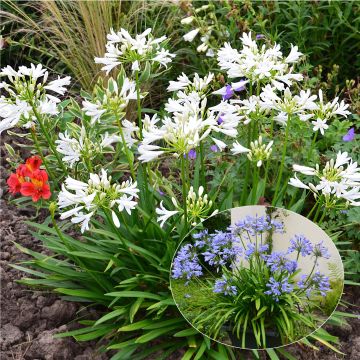Shipping country and language
Your country of residence may be:
Your country of residence is:
For a better user experience on our website, you can select:
Your shipping country:
-
Andorra
-
Austria
-
Belgium
-
Bulgaria
-
Canada
-
Chile
-
Croatia
-
Cyprus
-
Czechia
-
Denmark
-
Estonia
-
Finland
-
France
-
Germany
-
Greece
-
Hungary
-
Iceland
-
Ireland
-
Italy
-
Latvia
-
Lithuania
-
Luxembourg
-
Malta
-
Monaco
-
Netherlands
-
Poland
-
Portugal
-
Romania
-
Slovakia
-
Slovenia
-
Spain
-
Sweden
-
Switzerland
-
United Kingdom
We only deliver seed and bulb products to your country. If you add other products to your basket, they cannot be shipped.
Language:
-
French
-
German
-
Spanish
-
English
-
Italian
My Account
Hello
My wish lists
Log in / Register
Existing customer?
New customer?
Create an account to track your orders, access our customer service and, if you wish, make the most of our upcoming offers.


Bessera elegans
Bessera elegans
Bessera elegans
Coral Drops, Elegant Bessera
4 bulbs completely rotten, the others not very viable as they were half dry and feeble.
eric, 26/03/2024
Order in the next for dispatch today!
Dispatch by letter from €3.90.
Delivery charge from €5.90 Oversize package delivery charge from €6.90.
More information
This item is not available in your country.
Schedule delivery date,
and select date in basket
This plant carries a 6 months recovery warranty
More information
We guarantee the quality of our plants for a full growing cycle, and will replace at our expense any plant that fails to recover under normal climatic and planting conditions.
From €5.90 for pickup delivery and €6.90 for home delivery
Express home delivery from €8.90.
Does this plant fit my garden?
Set up your Plantfit profile →
Description
Bessera elegans, sometimes called the Coral Drop or Mexican Coral, is a marvel of delicacy and brilliance that comes to us from southern Mexico. This perennial plant with a corm blooms in the second half of summer, in the form of floral stems carrying numerous bell-shaped or Chinese hat-shaped flowers, a bright coral red with white stripes on the inside. It is cultivated in open ground all year round, in shade or semi-shade, in our warm regions that are spared from frost, in a very well-drained soil. Grow it like a gladiolus or adopt it in a large pot on the terrace, to be stored dry in winter: the effect is guaranteed!
The Besseria genus, related to Triteleia and Brodiae, includes one or two bulbous Mexican species belonging to the lily family. Only Bessera elegans is commonly cultivated for its ornamental qualities. This species is native to southwestern Mexico, where it grows in the undergrowth up to 1500m (4921ft) altitude. In nature, it is a very variable plant in colour and size that is adapted to a very contrasting climate, with dry winters and rainy and hot summers. The selection we offer generally reaches 40 to 50cm (16 to 20in) in height when flowering, although it can sometimes, depending on the growing conditions, reach up to 70cm (28in). This perennial herbaceous plant has a small corm (storage organ), 5 to 6cm (2in) in circumference. The foliage emerges more or less early in spring, encouraged by the heat. At that time, it is frosted with a purple iridescence. It then develops into long and very narrow basal leaves, dark green in colour. The floral stems often emerge at the same time as the leaves, but only take off in summer. If the vegetation has started early enough, the flowers will bloom in late July or early August. Each floral stem carries up to 30 flowers, 5cm (2in) in diameter, directed downwards, grouped in umbels at the top. They may resemble small umbrellas and are composed of 6 lanceolate petals surrounding a white perianth enclosing prominent bright red stamens. As soon as the foliage fades, the plant goes into dormancy. It is essential that this period of dormancy takes place in a dry environment and is spared from frost.
Bessera elegans is a somewhat capricious plant but of great beauty, relatively easy to cultivate if one manages to provide it with growing conditions similar to those it experiences in nature. While it does not have any specific soil pH requirements, it does require the soil to be light and well-drained. Growing it in pots allows it to spend the bad season dry and sheltered from heavy frosts that are fatal to it, but also to admire its summer flowering up close and from below, which is of uncommon delicacy and elegance. On the terrace, it will thrive in semi-shade alongside Asian lilies, a Fuchsia regia, ornamental ginger, or even a Billbergia nutans.
Report an error about the product description
Bessera elegans in pictures
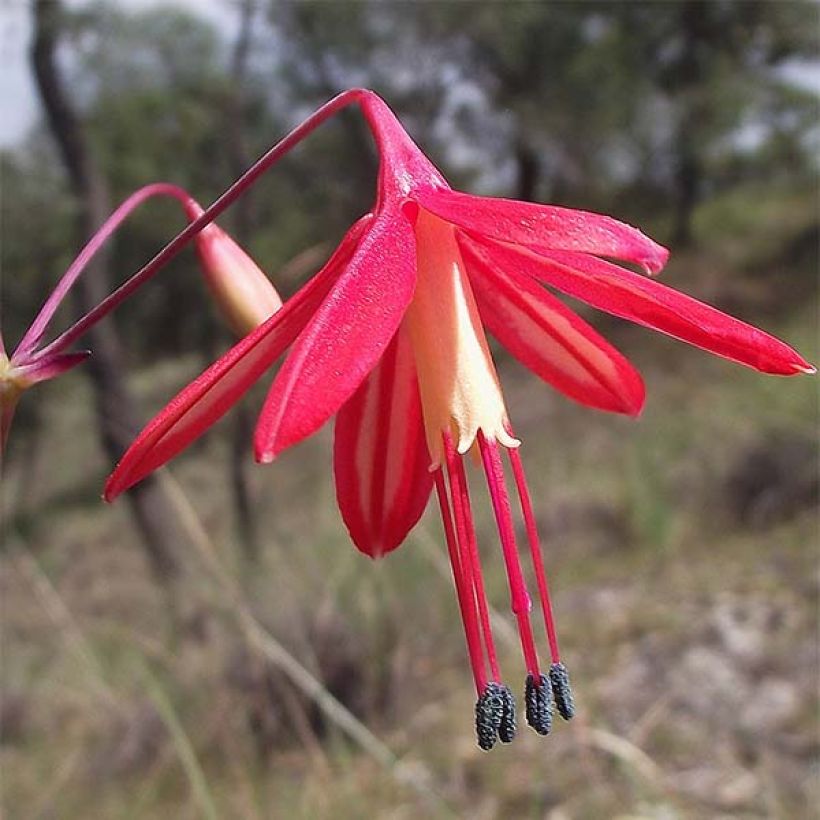

Plant habit
Flowering
Foliage
Botanical data
Bessera
elegans
Liliaceae
Coral Drops, Elegant Bessera
Central America
Other Summer bulbs A to Z
Planting and care
Bessera elegans will appreciate being grown in a pot, in a light soil composed of compost, light soil, and coarse sand, with a layer of gravel or clay pellets at the bottom of the pot for drainage. Vegetation can be started earlier, indoors, and the plant can be moved outside in May or June (depending on the region) to avoid temperature shock. Flowering can then occur as early as the end of July. It should be placed in partial shade, or even in full shade, and watered regularly during the growing period, without excess. As soon as the leaves dry out, the pot should be kept dry and frost-free during the winter dormancy period.
In our frost-free regions Bessera elegans can perfectly survive in the ground all year round, in a slightly sunny border.
Planting period
Intended location
Care
-
, onOrder confirmed
Reply from on Promesse de fleurs
Bulbs to grow in pots
Haven't found what you were looking for?
Hardiness is the lowest winter temperature a plant can endure without suffering serious damage or even dying. However, hardiness is affected by location (a sheltered area, such as a patio), protection (winter cover) and soil type (hardiness is improved by well-drained soil).

Photo Sharing Terms & Conditions
In order to encourage gardeners to interact and share their experiences, Promesse de fleurs offers various media enabling content to be uploaded onto its Site - in particular via the ‘Photo sharing’ module.
The User agrees to refrain from:
- Posting any content that is illegal, prejudicial, insulting, racist, inciteful to hatred, revisionist, contrary to public decency, that infringes on privacy or on the privacy rights of third parties, in particular the publicity rights of persons and goods, intellectual property rights, or the right to privacy.
- Submitting content on behalf of a third party;
- Impersonate the identity of a third party and/or publish any personal information about a third party;
In general, the User undertakes to refrain from any unethical behaviour.
All Content (in particular text, comments, files, images, photos, videos, creative works, etc.), which may be subject to property or intellectual property rights, image or other private rights, shall remain the property of the User, subject to the limited rights granted by the terms of the licence granted by Promesse de fleurs as stated below. Users are at liberty to publish or not to publish such Content on the Site, notably via the ‘Photo Sharing’ facility, and accept that this Content shall be made public and freely accessible, notably on the Internet.
Users further acknowledge, undertake to have ,and guarantee that they hold all necessary rights and permissions to publish such material on the Site, in particular with regard to the legislation in force pertaining to any privacy, property, intellectual property, image, or contractual rights, or rights of any other nature. By publishing such Content on the Site, Users acknowledge accepting full liability as publishers of the Content within the meaning of the law, and grant Promesse de fleurs, free of charge, an inclusive, worldwide licence for the said Content for the entire duration of its publication, including all reproduction, representation, up/downloading, displaying, performing, transmission, and storage rights.
Users also grant permission for their name to be linked to the Content and accept that this link may not always be made available.
By engaging in posting material, Users consent to their Content becoming automatically accessible on the Internet, in particular on other sites and/or blogs and/or web pages of the Promesse de fleurs site, including in particular social pages and the Promesse de fleurs catalogue.
Users may secure the removal of entrusted content free of charge by issuing a simple request via our contact form.
The flowering period indicated on our website applies to countries and regions located in USDA zone 8 (France, the United Kingdom, Ireland, the Netherlands, etc.)
It will vary according to where you live:
- In zones 9 to 10 (Italy, Spain, Greece, etc.), flowering will occur about 2 to 4 weeks earlier.
- In zones 6 to 7 (Germany, Poland, Slovenia, and lower mountainous regions), flowering will be delayed by 2 to 3 weeks.
- In zone 5 (Central Europe, Scandinavia), blooming will be delayed by 3 to 5 weeks.
In temperate climates, pruning of spring-flowering shrubs (forsythia, spireas, etc.) should be done just after flowering.
Pruning of summer-flowering shrubs (Indian Lilac, Perovskia, etc.) can be done in winter or spring.
In cold regions as well as with frost-sensitive plants, avoid pruning too early when severe frosts may still occur.
The planting period indicated on our website applies to countries and regions located in USDA zone 8 (France, United Kingdom, Ireland, Netherlands).
It will vary according to where you live:
- In Mediterranean zones (Marseille, Madrid, Milan, etc.), autumn and winter are the best planting periods.
- In continental zones (Strasbourg, Munich, Vienna, etc.), delay planting by 2 to 3 weeks in spring and bring it forward by 2 to 4 weeks in autumn.
- In mountainous regions (the Alps, Pyrenees, Carpathians, etc.), it is best to plant in late spring (May-June) or late summer (August-September).
The harvesting period indicated on our website applies to countries and regions in USDA zone 8 (France, England, Ireland, the Netherlands).
In colder areas (Scandinavia, Poland, Austria...) fruit and vegetable harvests are likely to be delayed by 3-4 weeks.
In warmer areas (Italy, Spain, Greece, etc.), harvesting will probably take place earlier, depending on weather conditions.
The sowing periods indicated on our website apply to countries and regions within USDA Zone 8 (France, UK, Ireland, Netherlands).
In colder areas (Scandinavia, Poland, Austria...), delay any outdoor sowing by 3-4 weeks, or sow under glass.
In warmer climes (Italy, Spain, Greece, etc.), bring outdoor sowing forward by a few weeks.

